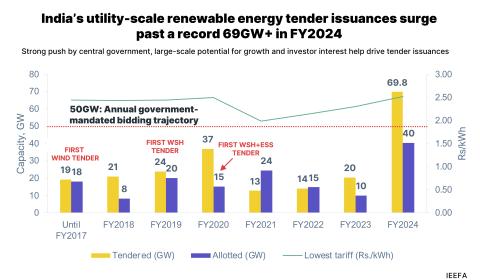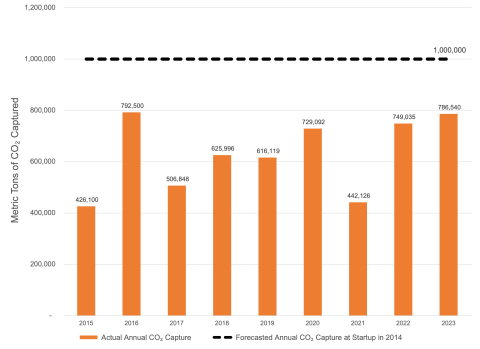New Mexico’s risky reliance on oil revenue must change
Download Full Report
Key Findings
New Mexico must establish a more reliable basis for its revenue base. Short-term cuts and spending restrictions will bide the time but will not, alone, rebuild the state’s economy.
The market challenges should not be confused with mere volatility; the oil and gas industry’s financial problems will not disappear. The combined effects of high infrastructure costs, over-production and substantial shifts in the energy market have permanently weakened the oil and gas industry’s revenues and profitability.
Despite booming production, the oil and gas industry has struggled financially for most of the past decade. While the pandemic and attendant oil market disarray have shone a spotlight on the industry’s vulnerabilities, fundamental weaknesses were already present.
Executive Summary
An unprecedented sea change in energy markets threatens the fiscal health of New Mexico. Through leases, royalty payments and taxes, the oil and gas industry has directly provided a high percentage of New Mexico’s annual revenues—ranging from 15 percent to more than 30 percent during the past dozen years. But the industry is in the midst of a long-term financial decline that transcends its usual boom-and-bust volatility. State policymakers must grapple with this new reality and develop a robust response to protect New Mexico’s fiscal health.
Record-setting production, robust revenues and projections of steady oil price increases in recent years have created a consensus that the state’s heavy dependence on oil and gas revenues was reliable over the long term. High production levels, however, have obscured the industry’s underlying problems.
Since at least 2014, the U.S. shale industry has flooded global markets with oil and gas. As investment stimulated the oil and gas economic chain and bolstered public budgets, it also lowered prices and triggered value destruction for investors. New Mexico oil and gas prices have been declining since 2014. From 2010 to 2014, oil prices averaged $86 per barrel (bbl), but from 2015 to 2019, pre-pandemic prices fell to an average of $48/bbl, a 44 percent drop.
Even as New Mexico was posting record oil and gas revenues, largely due to the sector’s high productivity, the industry itself was experiencing steep losses.
The COVID-19 pandemic brought the industry’s fundamental weaknesses front and center. The New Mexico Legislative Finance Committee projects a steep decline in oil and gas revenue through Fiscal Year (FY) 2021. In its most optimistic scenario, the committee puts the average price of oil in New Mexico at only $43.50/bbl through FY 2022. While an improvement over April’s historic lows, this is far below what is needed to return New Mexico to robust fiscal health.
While noting that the federal COVID-19 stimulus improved the state’s fiscal condition to some extent, the committee still predicts significant shortfalls from its December 2019 revenue estimate. The stimulus supported sectors of the economy unrelated to oil and gas production. Low oil prices are expected to continue to result in underperformance of the oil and gas sector as a revenue source for the state.
New Mexico will suffer from the effects of low global oil prices for the foreseeable future. Industry experts and some of New Mexico’s leading oil and gas producers have sounded stark warnings, including statements that the oil and gas business model is “an economic disaster” (Scott Sheffield, CEO, Pioneer Natural Resources, 2019) and that the problems were here “even before the current market turbulence” (U.S. Energy Information Administration, 2020). Indicators are unmistakable, and include the following:
- The top oil majors have experienced declining profits for most of the past 10 years. The oil and gas sector held 29 percent of the Standard & Poor’s 500 stock index in 1980, but now commands only 2.1 percent.
- ExxonMobil, which does business in New Mexico under its XTO brand, returned only 6.5 percent on capital deployed in 2019, before the pandemic hit, down from 25 percent in 2012. It has a market capitalization of less than $150 billion, down from $527 billion in 2007, and it may write off one-fifth of its reserves this year. The five largest publicly traded oil and gas companies—BP, Chevron, ExxonMobil, Royal Dutch Shell and Total—have failed for years to generate enough cash to cover payments to shareholders. They have funded shareholder dividends since 2010 by using stopgap asset sales and new long-term debt to bridge chronic shortfalls.
- Short-term cash positions have deteriorated, asset sales and consolidation transactions are distressed; the industry outlook for both large and small companies is largely negative.
Although oil prices edged up this summer after plummeting to negative numbers in the spring, the increase will not be enough to restore financial strength to the industry. That would require not only an oil price of at least $80/bbl for several years but also a robust market for reserves; declining debt levels and upgraded credit ratings; use of debt to create revenue-producing assets; a cessation of bankruptcies; fiscal stability of state-owned enterprises and access to rising demand unfettered by competitors. This combined scenario is unlikely to occur.
Major oil and gas companies acknowledge that economic growth requires less energy today. Energy experts now discuss this insight as fact.
- The Energy Information Administration projects that, by 2050, the domestic energy use associated with each dollar of US economic growth will be less than half of what it was in 2005.
- Electric vehicles, fuel efficiency and changing use patterns are curbing demand for gasoline. A new report predicts that the electric share of passenger vehicle sales will rise to 28 percent by 2030 and more than 50 percent by 2040. It concludes that oil demand from passenger vehicles will never recover to 2019 levels.
- Several major utilities and energy planners have rejected natural gas as a “bridge fuel,” announcing plans to replace coal-fired power plants with renewable energy facilities, skipping the use of gas as an interim measure.
- Plastics prices and profits today are far below what they were 10 years ago, and oversupply from the global petrochemical industry buildout is likely to drive them further down.
- Companies are writing down their oil and gas inventories, expecting lower profits and less investment.
All of this spells trouble for a New Mexico that is heavily dependent on oil and gas revenues.
New Mexico must establish a more reliable basis for its revenue base. Short-term cuts and spending restrictions will bide the time but will not, alone, rebuild the state’s economy. The state should overhaul its economic development programs to broaden its industrial and commercial base, boosting sectors that produce job growth and rising profitability.
Press release: Despite the talk, Shell and Total are still investing much more in fossil fuels than renewables
Please view full report PDF for references and sources.













